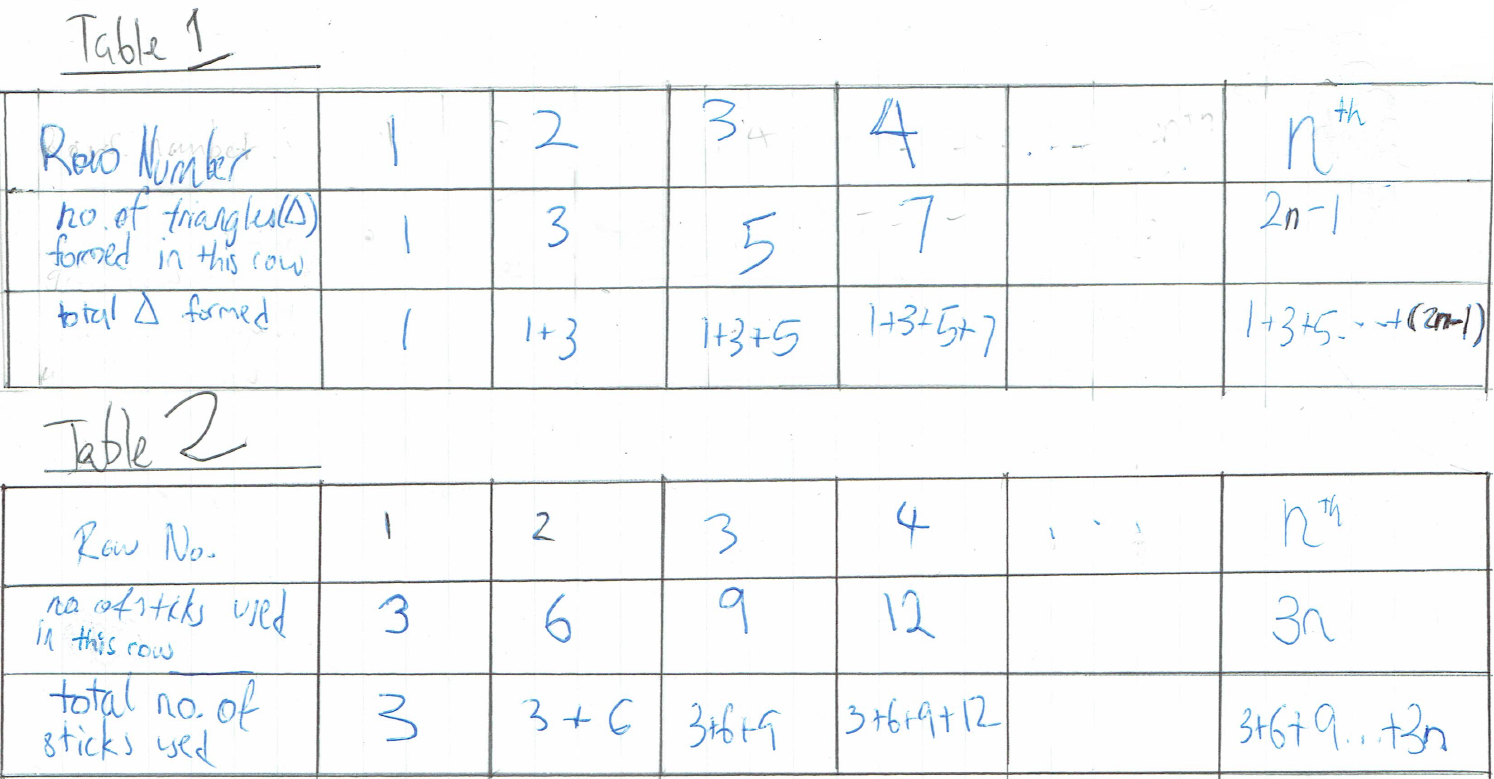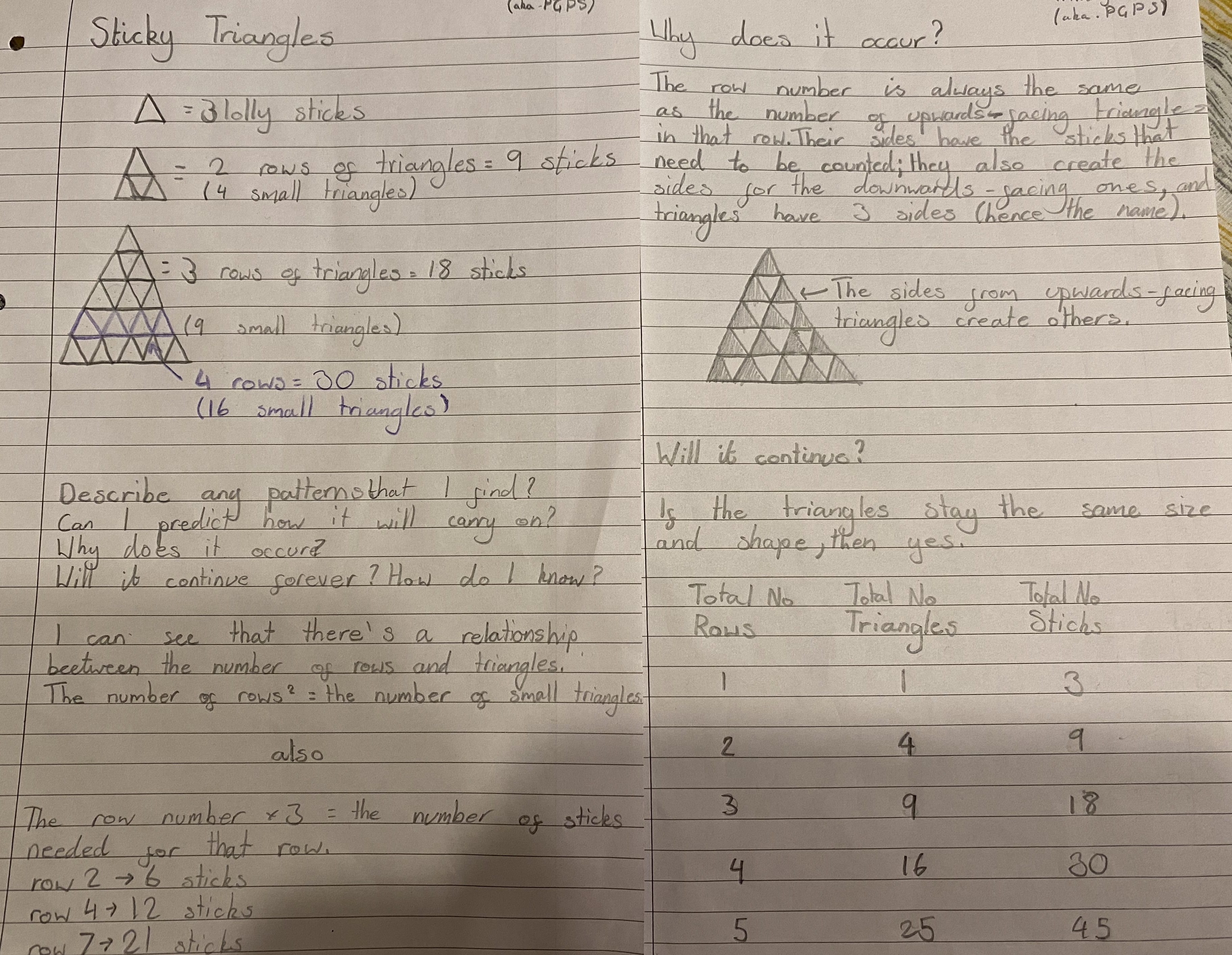Copyright © University of Cambridge. All rights reserved.
'Sticky Triangles' printed from https://nrich.maths.org/
Show menu
We received a lot of solutions to this problem, so thank you to everybody who shared their ideas with us.
Mira from Citipointe Christian College in Australia looked at each row of triangles in the pattern:

Well done, Mira - this is a really clear explanation for why the number of triangles is increasing by two more each time.
Ci Hui Minh Ngoc from Kelvin Grove State College in Brisbane, Australia also looked at this pattern by thinking about each row separately. They found the total number of triangles and lolly sticks in each shape by adding the numbers in each row:

Well done for finding a general rule for the number of triangles and the number of lolly sticks in each shape. Ci Hui Minh Ngoc also worked out that the pattern 1 + 3 + 5 + ... + (2n - 1) is the same as n2 when n is even. (It's actually the same as n2 when n is odd, too!)
Fern from Pierrepont Gamston Primary School in England just looked at the 'upwards-facing triangles' in each row to find the number of lolly sticks needed. You can click on the picture below to enlarge it:
This is a really clear way of thinking about it, Fern - well done.
Mei Mei and Eloise from St John's College School in Cambridge, UK drew the same table of rows, triangles and lolly sticks. They noticed that the number of lolly sticks used each time was similar to another mathematical pattern:
We discovered that the pattern was the triangle numbers x 3 for the lollies. 3(n(n+1)/2) if n is the number of rows.
Well done to both of you for spotting this, and for using the formula for triangle numbers to help you find a formula for the number of lolly sticks. I wonder why the number of lolly sticks used when there are n rows is the same as the nth triangle number?
Kevin, Dev and Ethan from St John's College School sent in a solution explaining how they worked out the formula for the number of lolly sticks in a general shape. They thought about which lolly sticks would be 'double-counted' when adding up the sides of all the triangles. Take a look at Kevin, Dev and Ethan's full solution to see how they did it!
We also received some excellent solutions from: Sacha from DCSG; Charmaine, Cassie, Elisha, Ethan, Frederick and Gloria from Citipointe Christian College; Faith from St Charles Primary School; Maddie and Clara from St John's College School; Maddy, Maisie, Emily, Hatty and Kara from Horfield CEVC Primary School in the UK; and Eleanor from Wales.
